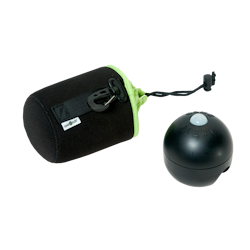Feral Hog Hunting Checklist
New to hog hunting? Check out our basic checklist of the steps you should take to prepare for your hunt, and the equipment you should never leave behind.

- HUNTING LICENSE AND/OR LANDOWNER'S PERMISSION
Because feral hogs are considered a non-native, invasive species, hog hunting regulations vary from state-to-state. In Texas, which has the largest hog population in the United States, feral hogs may be taken year round. For hunting on public land, a general hunting license is needed, and can be purchased for $25 for residents or for $315 for non-residents. For hunting on private land, a hunting license and landowner’s permission is required. If you’re not sure what the regulations are for your state, check out our hog hunting regulations guide. If you’re hunting in an area you’re unfamiliar with, be sure to familiarize yourself with local rules, regulations, and restrictions. - APPROPRIATE CLOTHING
Many states with invasive feral hog populations allow hog hunting year-round, meaning that your choice of clothing will depend largely on the time of year and the corresponding weather conditions. Generally, it’s best to wear pants made of a tough material that can withstand brush/wood conditions, such as canvas. If wearing jeans, brush pants or chaps are recommended. Depending on the weather conditions, boots, gloves, and jackets may need to be insulated or uninsulated; long underwear is advisable in colder months, and raingear may be needed depending on the time of year. All clothing should be camo or dark-colored; hunter orange laws vary by state. In Texas, persons hunting with firearms on public land in daylight hours are required to wear at least 400 square inches of hunter orange material with orange headgear, and at least 144 square inches appearing on both chest and back. - HANDHELD GPS,
TWO-WAY RADIOS, AND A MAP/COMPASS
You must take the proper precautions when hunting to ensure that you have the ability to communicate quickly and clearly with other members of your party, particularly when splitting up. Because cell phone service is often limited in hunting areas, two-way radios are reliable backup communication devices. Hand-held GPS devices are a convenient way to ensure that you stay in the proper area; however, a hand-held compass and a map should also be brought as a back-up. - FLASHLIGHT + EXTRA BATTERIES
Flashlights are particularly important when hunting nocturnal animals, such as hogs. Tactical flashlights can be used for navigating through the woods in the dark, and for quickly scanning the area and locating game. Our Game Alert® Rifle Kit includes a green LED flashlight, two lithium batteries capable of providing over 3 hours of runtime, and a mount for rifle/scope applications. - APPROPRIATE DRESSING/TAGGING TOOLS
Feral hogs often carry diseases which can be spread to humans through fluids, so it’s crucial to protect yourself by bringing the appropriate dressing tools, including a sharp knife for skinning and latex gloves for dressing. Depending on the method of field dressing you’re planning to use, it may be appropriate to bring a saw and an ice-filled cooler. Be sure to check tag requirements, as they change depending on location (there are no tags required to hunt feral hogs in Texas).
These tips are just a starting point for a successful hog hunt. Other general equipment you’ll always need includes a first aid kit, plenty of water, a clean firearm, and backup ammunition. Check out our hog hunting tips for beginners.













